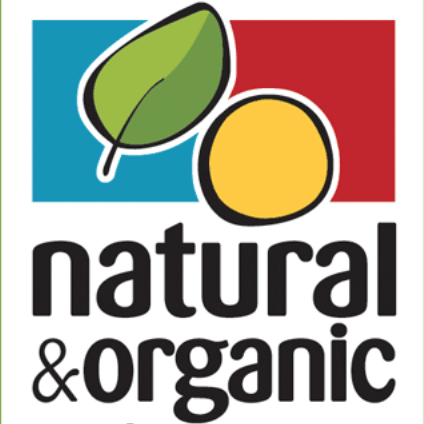
Hot Topics for natural skincare
This week I was at the Natural & Organics Products Show at Excel in London. It felt quite different from my experience there two years ago. Here’s what I observed and what I learnt.
Keeping it simple, I’ve focused on my Top 5 take-outs to share with you.
My top 5 Take Outs from the Natural and Organic show
Take Out #1: Bars – Shampoo bars and soaps
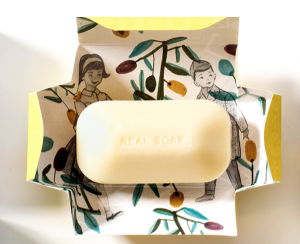
The beauty press has been full of talk of minimal-packaging and waterless-beauty for a good while now. We’re finding ways to move away from single-use plastic bottles and look at more environmentally friendly ways of presenting skincare products. It’s all about thinking in the round: while the ingredients are chosen to do good for us and the planet, the packaging and distribution should not do harm. My take outs #3 and #5 below certainly riff on this theme.
Some of the options available to us include:
- Minimise the quantity of product that we need to use, package and transport. Taking the water out can have a huge impact, it is often a high proportion of the total product volume (especially with shampoos and liquid soaps and cleansers).
- Think about the packaging as an integral part of the product – some cunning approaches include the wool wraps around soaps that provide protection and serve a useful function
- Change to more sustainable packaging with the focus on function and clean presentation. The skincare industry has been so guilty in the past of packaging providing more style than substance.
Which is where bars are coming into their own once again.
Soap Bars
There’s no denying bars of soap have been out of favour in recent years. Shower gels and liquid hand washes dominate with promises of convenience and anti-bacterial effectiveness. But as interest in ingredients and a desire to minimise packaging take hold, soaps are certainly on the resurgence.
They’re back with a difference now. Many’s the time I’ve gazed at the supermarket and chemist shelves trying to find a ‘good’ soap. Good luck with that. For a ‘good’ soap – one with natural ingredients and no artificial fragrances – it was necessary to turn to the craft markets and artisan shops. I would certainly always make a point of buying a handcrafted soap when I saw one – such a treasure. These are the kind of soaps that were on offer at the show, I do hope some of the brands had good success and we can start seeing them in more high street retail outlets soon.
Shampoo Bars
Although shampoo bars have always been ‘a thing’ they were relatively obscure until the mass awareness created by Lush. Certainly the first shampoo bar I tried was one of their’s, a good few years ago now. I remember being wow’d by such a magical concept: easy to use, easy to transport, last for ages – love them!
Feeling these were the way to go, I started looking at how to make my own shampoo bars. I’ll take you through this experience in another post and you can join the ongoing journey with me. The important thing for now is that there are basically two types of shampoo bar: one is a cake of solid surfactants, often referred to as a syndec bar (this is the Lush type), the other is created using traditional soap-making techniques. There are pros and cons to both which I’ll elaborate on in other posts, but my Take Out from the show is that the soap based shampoo bars are popping up again in some quite beautiful forms.
My thoughts on Take Out #1: Bars – Shampoo bars and soaps
I was surprised (and quietly delighted) to see so many products in bar form at the show. It will take time for consumers to adjust to the new ways of using these, and trust their performance – the proof is in the use – but they show that there are solutions out there for many of our current concerns over packaging and ingredients. While packaging was minimised, some brands had clearly put a lot of thought into presenting their products and had enticingly gazeable-at offerings. Without really wanting to show favouritism, here’s one to feast upon : ).
For more about natural soaps and shampoo bars, follow Field Fresh Skincare on Insta and you will see all the steps it takes to develop products you’ll love.
Take Out #2 Natural Deodorants

I was almost taken aback by the number of stalls offering natural deodorants at the show. I wrote a blog recently about these which stated that there was a new product launch every week. I believe I’ve seen that with my own eyes now.
A big fan of natural deodorant, I’ve found one of the benefits is that you can reduce the amount of product you use. I was fascinated to talk to the team on the Zindeo stand where they advise using the product every two to three days. Those sceptical of natural products often think they won’t be as effective as the chemical-laden version; natural deodorants are one example of the huge effectiveness of natural ingredients. You’d be surprised.
My thoughts on Take Out #2 Natural Deodorants
Aluminium based deodorants and anti-perspirants have surely had their day. With so much innovation in the natural deodorant world there is no excuse for producing the old way, especially with the questionable links to health concerns.
I’m hoping that these new offerings will start shifting opinions about what should be in a deodorant and increase the recognition that what you can make at home, or buy made from natural ingredients can be truly effective.
Take Out #3 Packaging
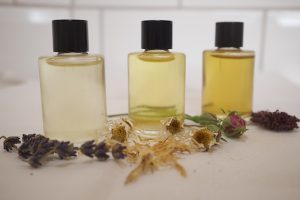
I’ve already mentioned the minimal packaging enabled by adopting bar forms of products. The topic of packaging was a key point of interest in a panel discussion on the second day of the show: Clean Beauty ’50 shades of green’. Katie Hill from My Green Pod was particularly clear about the need for 360 degree thinking about what we mean by ‘Clean Beauty’ – too often band-wagons are jumped on by brands keen to have the ‘right’ buzz words on their packaging while in reality we’re just swapping one dubious practice for another ill-thought-through one.
She used our current attitudes to plastic as an example. To avoid plastic, some have made the ‘simple’ switch to aluminium or glass packaging. These in themselves have a significant impact on the environment due the energy taken to extract and produce them. For some applications plastic can be the right solution, used in a responsible way. The solutions are not simple.
Practical suggestions offered by the panel included :
- use less product (do we have to bath/shower/wash our hair every day? in some cases once a week could suffice – now that’s quite radical thinking!)
- take our kitchen recycling habits into the bathroom. This suggestion was informed by the recent Soil Association Organic Beauty and Wellbeing Report 2019 that revealed that only 50% of the packaging on bathroom products is recycled.
My thoughts on Take Out #3 Packaging
It is so refreshing to hear rational conversation about packaging that recognises that no method of mass consumption is blame-free in terms of its impact on the planet. Rather than aggressive out-lawing of one practice over another (potentially equally-damaging) one, we should look in the round at our own skincare habits and choices and the impact they have. Personally I see learning the skills for Blend-it-Yourself skincare as one of the most positive and proactive steps an individual can take to minimise the impact and maximise the effectiveness of their skincare.
Take Out #4 ‘Free From’
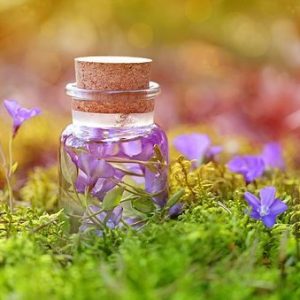
How do you know which are the right skincare products for you to buy? We all know we should flip to the back and squint over the tiny print of the ingredients list. But when encouraging flashes of information are splashed brightly across the front, it’s human nature to form an instant perception. Our inherent need to classify quickly assigns a ‘good’ / ‘bad’ value before we’ve had time to consciously consider.
That’s why brands love buzz words like ‘paraben free’, ‘dermatologically tested’ and ‘aluminium free’. Whether they have any real meaning or not. By having something ‘big’ to shout about they can distract us from really taking in what their product truly offers.
In an interesting panel discussion Jayn Sterling, MD at Weleda, was particularly concerned about the term ‘Free from’. She considered this to be another form of green-washing from the brands-with-big-budgets enabling them to have something distractingly positive to shout. Her admirable and consistently common-sense view was that the brands to trust are those that talk about the positive, good ingredients they DO include in their products. The actual stuff you’ll be putting on your skin. Looked at from this perspective ‘free from’ seems an incredible market stance. We should care much more about what IS in our products, that what ISN’T in them. Thank you Jayn and all at Weleda for proving that it is possible to build a sustainable business based on good ingredients and good practices.
My thoughts on Take Out #4 ‘Free From’
Here’s a rule of thumb for you to take with you when shopping: if there’s a splash across the front of a product promoting the great buzz thing they want you to know, assume that to be a distraction technique stopping you from investigating all the things they’d rather you didn’t know about that brand.
In contrast, when a brand you may not yet be familiar with speaks plainly and simply on its packaging, promoting good ingredients, it’s likely worth looking at more closely. Go ahead and browse their social media where you’ll probably find their full story about why they do what they do, the ingredients they choose and how they source them, the attention they give to different elements of processing, packaging and distribution and the concepts, organisations and people that they respect and are guided by.
Then make an informed decision about who you trust and where you want to direct the power of your money.
Take Out #5: Beauty Miles

Sneeking into the last speaking slot on the Beauty stage on the first day of the show was a talk on ‘Beauty Miles: How using local ingredients could be the next big thing‘ by Lilian Barker of Fairfield Gardens.
Lilian described how ‘the Beauty Miles concept pays close attention to how far beauty product ingredients have to travel before reaching the consumer’. She pointed out the benefits this brings to:
- ingredient transparency,
- quality of ingredients, and
- environmental responsibility
with absolute assurance that UK-sourced ingredients are capable of being as effective as those sourced from across the globe.
My thoughts on Take Out #5 Beauty Miles:
Hoorah!! It’s wonderful to hear someone expounding the benefits of locally sourced skincare ingredients.
As well as the benefits pointed out above I would also add that I believe using the ingredients that grow around us to be more in tune with our own skin, as they have experienced the same conditions as us – there’s possibly a physiological benefit. There’s certainly a psychological benefit through the therapeutic effects of connecting us with the nature on our doorstep.
I wonder how long it will be before this becomes a mainstream topic, not one tucked away at the end of the day?
If you choose to buy local food, you should think about buying local skincare too.
It may be Take Out #5 but I believe it to be Issue #1.
A quick note on things I DIDN’T see at the show
There are some things that have been getting plenty of on-screen coverage in beauty blogs and press which I didn’t see so evidently at the show. Perhaps this reflects the time it takes to bring a skincare product to market. It can be a long haul between the buzz of a great new concept and the reality of product we can buy and use.
So some things I didn’t see are:
- Personalisation of products offering the ability to create something to suit your own skin. This is surely just around the corner, although I fear it’s a move that requires the consumer to take as much interest in their skin and what they put on it as the producer takes in getting the offer right.
- Enough championing of natural ingredients. It’s always disappointing to me when a product is put on a pedestal and yet when you ask the purveyor what’s actually ‘in’ the product they look blankly at you as if they’ve never been asked that question before [Try doing this in a flashy gin bar for the best blank-face responses!] To be honest this did happen to me a couple of times at the show. Is it an excuse to say that your knowledgeable staff are not on the stand at that point? There are so few opportunities for good face to face engagement, it seems a shame not to make the most of it by using the most powerful, convincing arguments as to why your products are great – which surely, in any product worth buying, comes down to the ingredients.
Great company
It was a real pleasure for me to share the experience of attending the show with two other people who are passionate about organic products and natural skincare. Debbie Gribben, therapist and founder of Your Inner Peace found lots of inspiration and support for the charity she is currently setting up. Blanka Springfield, who’s just starting out in natural skincare formulation, brought a new perspective to many products for me through her Polish heritage and the close association with herbs that her family background has instilled in her.
For example, aronia berries were completely new to me – a little like a cross between a blueberry and a sloe. Blanka described the large bush covered in berries in her yard back home from which her mother would love to press the juice. Filled with vitamin C, like our blackcurrants, I could imagine them making a healthy, purply contribution to a lip balm. Now that would be an ingredient worth talking about.
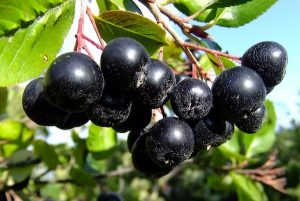
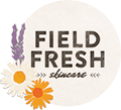

Okay, I didn’t know about the shampoo bar indeed something I haven’t tried yet.. anyhow thanks for sharing I know now what I need to try…
It’s truly a nice and useful piece of info. I am satisfied that you simply shared this helpful information with us. Please stay us informed like this. Thank you for sharing.|